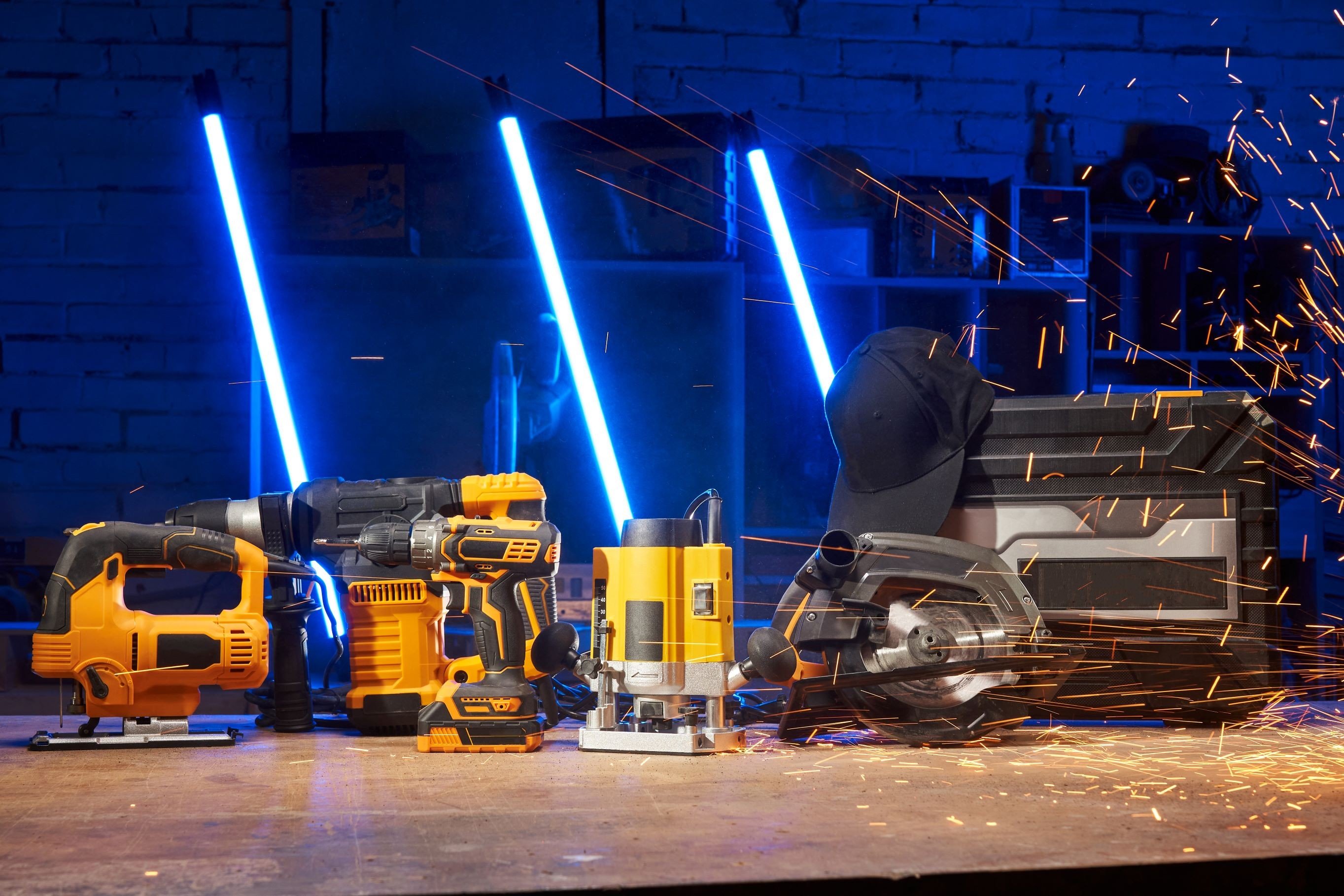10 Life Lessons We Can Learn From Powertool

The Evolution of Power Tools: Revolutionizing Construction and DIY
In the modern age, power tools have ended up being vital across numerous sectors, including building and construction, woodworking, vehicle, and even home improvement. These tools, which harness electrical power or compressed air, have significantly enhanced efficiency, accuracy, and safety in a large range of jobs. This post explores the evolution of power tools, their numerous types and applications, and necessary factors to consider for their use.
A Brief History of Power Tools
The journey of power tools started in the 19th century with the innovation of numerous pioneering devices. Although Read Much more have been around for millennia, the introduction of electrical power marked a considerable turning point. Here is a short timeline:
| Year | Turning point |
|---|---|
| 1813 | The very first electric drill is developed by Henry W. Seely, laying the foundation for future power tool innovation. |
| 1895 | The first portable electric drill is established, revolutionizing drilling and woodworking. |
| 1920s | Intro of pneumatic tools, mostly utilized in the automotive market. |
| 1940s | Power tools start to be commonly used in property tasks. |
| 1980s | Shift from corded to cordless tools starts with advancements in battery technology. |
| 2000s | Smart innovation integrates into power tools, enhancing functionality and functionality. |
This timeline underscores the transformative journey that power tools have gone through, evolving from fundamental concepts into sophisticated makers that carry out complicated jobs with ease.
Types of Power Tools
Power tools are classified based on their operational mechanism, and understanding these types can help with better choice and use of tools. Here are some common classifications:
1. Electric Power Tools
Electric tools utilize electrical energy to operate. They can be classified as:
- Corded Power Tools: Tools that require a direct connection to the power outlet, such as circular saws, drills, and sanders. These provide unrestricted run time however are limited by cable length.
- Cordless Power Tools: Battery-operated tools that integrate convenience with mobility. Examples include battery-powered drills, effect chauffeurs, and reciprocating saws.
2. Air-Powered Tools
These tools operate on compressed air, especially in commercial settings. Common examples consist of pneumatic nailers, impact wrenches, and spray weapons.
3. Specialized Power Tools
These encompass specific functions and applications:
- Rotary Tools: Such as Dremel, used for cutting, sanding, and polishing.
- Planers: Used for smoothing and shaping wood surfaces.
- Laser Levels: Providing accuracy in leveling and alignment jobs.
4. Hobbyist Power Tools
Crafting enthusiasts benefit from smaller, specialized tools such as die cutters, and mini drills.
5. Programmable and Smart Tools
With innovation combination in the 21st century, clever power tools can be configured for specific jobs, use safety features, and supply real-time feedback to users.
Applications of Power Tools
The extensive adaptation of power tools has actually led to their varied applications throughout numerous industries:
- Construction and Renovation: Essential for framing, roofing, and flooring. They improve effectiveness and lower manual work.
- Woodworking: Power tools like routers, saws, and jointers permit accuracy in crafting furnishings and cabinetry.
- Automotive: Repairing and assembling automobiles with tools like effect wrenches and tire changers.
- Do It Yourself Home Projects: Homeowners progressively rely on power tools for renovations and repairs, improving their DIY capacity.
Safety Considerations When Using Power Tools
While power tools provide many advantages, they likewise present threats if not used correctly. Here are crucial security suggestions to consider:
- Always read the user handbook before operating any tool.
- Usage Personal Protective Equipment (PPE), such as gloves, safety glasses, and ear protection.
- Keep the office clean and well-lit to decrease risks.
- Make certain to unplug or get rid of the battery from tools when changing accessories.
- Never bypass security features set up on the tools.
- Make sure appropriate ventilation when utilizing tools that produce dust or fumes.
Regularly Asked Questions (FAQs)
Q1: What is the distinction between corded and cordless power tools?
A: Corded tools need a direct connection to a power source, offering unlimited run time however restricted variety. Cordless tools offer mobility and convenience however rely on battery life and charging.
Q2: How do I maintain my power tools?
A: Regular upkeep involves cleaning, examining for harmed parts, and lubricating moving elements. Furthermore, follow the manufacturer's instructions for battery care and storage.
Q3: What safety equipment do I require for power tool usage?
A: Essential security gear consists of safety goggles, ear security, gloves, and respiratory masks for dust control.
Q4: Can I utilize power tools indoors?
A: Yes, but ensure adequate ventilation and usage dust collection systems where relevant to decrease threats.
Q5: What should I do if my power tool breakdowns?
A: Stop using the tool instantly, unplug it, and consult the user manual for fixing tips. If needed, look for professional repair help.
Power tools have actually unquestionably changed tasks throughout different sectors, boosting effectiveness and security throughout the working environment. As innovation continues to evolve, basic power tools are becoming smarter and more easy to use. Understanding their types, functions, applications, and safe handling treatments gears up users with the knowledge needed to optimize their effectiveness and safety. With a blend of development and duty, people can continue to harness the full power of these incredible tools in both professional and DIY jobs.

